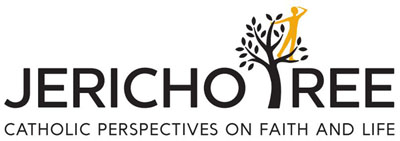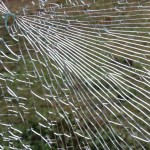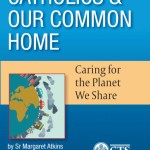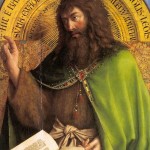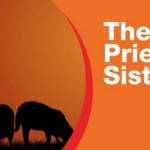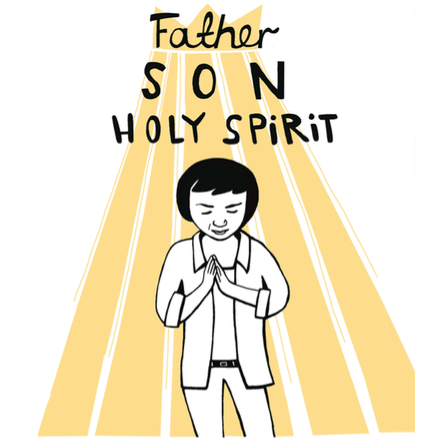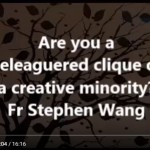The Year of Mercy: what you need to know about the Jubilee
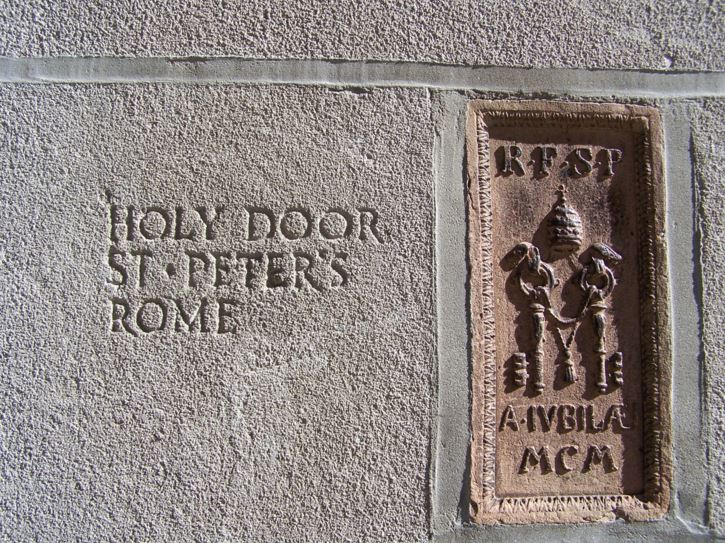
The basics, please.
This morning, during the Feast of the Immaculate Conception Mass at St Peter’s Basilica in the Vatican, Pope Francis will open the Extraordinary Jubilee of Mercy, which lasts until November 20 (Christ the King) next year.
It’s a Holy Year, also known as a Jubilee Year, when the Church emphasizes some characteristic of the Christian faith, and invites people to grow closer to God and each other.
How often does this happen?
Let’s see. An Ordinary Jubilee occurs every 25 years; the last one was the Great Jubilee of 2000. But popes can break the cycle, and declare an ‘extraordinary’ Jubilee whenever they wish (for example, Pope St John Paul II declared an extraordinary Jubilee of Redemption in 1983). Pope Francis has declared this extraordinary jubilee one of mercy, because he reckons mercy needs re-emphasing or recovering. “Perhaps we have long since forgotten how to show and live the way of mercy”, he writes in Misericordiae Vultus.
Miseri what?
Sorry. Misericordiae Vultus is the name of the Bull — like an edict — which Pope Francis used to announce the Jubilee back in April. The title means ‘The Face of Mercy’, which is, of course God’s face. It’s the manifesto, if you like, of this jubilee year, and a must-read (find it here). The Pope says there that “the Church’s very credibility is seen in how she shows merciful and compassionate love” — which is pretty strong. He’s saying unless people recognise in the Church God’s merciful love, then they won’t recognise the Church as God’s body on earth. Hence the motto for the Jubilee: “Merciful like the Father”.
How long have these jubilee years been going on?
The first was declared — ‘indicted’, to use the correct word — in 1300, so that’s 715 years. Boniface VIII was keen for a wave of spirituality and forgiveness to rise up and meet the violence and hatred of the era. So he declared that pilgrims coming to Rome during that year would receive “full remission of sins”. After that, they varied in frequency — every 100 years, every 50 years, and even 33 years (corresponding to Christ’s years on earth) until 1470, when it became settled at every 25 years, with the odd interruption (such as 1850, because of Pius IX’s temporary exile). By then, the format had become standard too: announcing it with a Bull, and opening it with a Holy Door.
So this is an invention of the medieval Church?
Yes, but recovering a very old Biblical idea. The concept of the Jubilee is very strong in the Old Testament. The word comes from the Hebrew Yovel, meaning ‘ram’s horn’, which was blown to mark a year every 50 years dedicated wholly to God. “You will declared this fiftieth year sacred and proclaim the liberation of all the inhabitants of the land,” says Yahweh in the Book of Leviticus, adding: “This will be a jubilee for you.” The idea was to interrupt the cycle of day-to-day living in order to reconnect humanity with its Creator.
There’s a strong link between the concept of sabbath every seven years, and jubilee every 50th: whatever the land produced was shared among the neediest, and debts were forgiven. There was also an ecological element: “For the land belongs to me” (Leviticus 25:23). Human beings were not to continue exploiting the land for their own benefit; there was a divine order that must be respected. At the same time, the Hebrew Jubilees looked forward to the coming of the Messiah, emphasising the innate equality of all people and their hope of liberation.
Then there’s the prophecy in Isaiah, fulfilled in Jesus, when God announces that he will send a Messiah full of mercy, a Messiah who would say: “The spirit of the Lord God is upon me… he has sent me to bring good news to the poor, to bind up the wounds of broken hearts, to proclaim liberty to captives, freedom to prisoners, and to announce a year of mercy of the Lord” (Isaiah 61:1-3).
Wait, did you say ‘ecology’? A link there with Laudato Si’?
Well spotted. Pope Francis’s great enyclical on care of the earth is precisely all about that — recovering a sense of the planet as God’s gift to be nurtured, rather than an object to be plundered. That’s why, tonight, there are going to be beautiful photos projected onto the cupola of St Peter’s Basilica, as part of a presentation called “Fiat Lux: Illuminating Our Common Home”. Obviously no one has forgotten that this Extraordinary Jubilee opens just as the 21st UN climate change conference in Paris reaches its conclusion.
Back to the history. What did the popes say was their purpose?
Paul VI gets the award for the pithiest summary. He said the object of the 1975 ordinary Jubilee was for “Renewal and Reconciliation”. Pius XII may be the lengthiest. Promulgating the 1950 Jubilee, he said it was for the sanctification of souls through prayer and penance and unswerving fidelity to Christ and the Church; action for peace and the safeguarding of the holy places; defence of the Church against the attacks from her enemies, imploring faith for those who had strayed, as well as promoting social justice and assisting the poor and needy. Possibly the best prepared one was the Great Jubilee of 2000, which Pope St John Paul II anticipated by a three-year mediation on each person of the Trinity.
Pope Francis wants this Jubilee to teach the Church that mercy is the essence of God’s proclamation, and for the whole of humanity to experience this. “How much I desire that the year to come will be steeped in mercy, so that we can go out to every man and woman, bringing the goodness and tenderness of God!” he exclaims in Misericordiae Vultus. “May the balm of mercy reach everyone, both believers and those far away, as a sign that the Kingdom of God is already present in our midst!”
What’s the Holy Door about? Why a door?
It’s linked to pilgrimage, which the Jubilee Years encourage. The Holy Door of the Basilica is the pilgrim’s destination. The Church is a sign of the House of God, and Jesus Christ is the great Door that opens humanity to the love of the Father. Pope Francis has given a new symbolism to the ceremony by a pre-emptive opening of the Holy Door in Bangui cathedral, Central African Republic, showing how God prefers the periphery. “The Holy Year begins earlier in this land that has suffered for many years as a result of war, hatred, misunderstanding and a lack of peace. Let us ask for peace and reconciliation for all countries that are at war”, the Pope prayed.
But today’s is still the main ceremony (a very beautiful one) to mark the opening of the Jubilee. The Holy Door of St Peter’s gets bricked up at the end of each Jubilee Year, and this morning the Pope opens the new one by knocking the bricks away with a hammer. Next Sunday, the Church across the world follows suit, as Holy Doors are opened in cathedrals in every city. In Rome, Pope Francis will do the same with ‘his’ cathedral — the cathedral of the Diocese of Rome, St John Lateran.
You can see the power of the symbol. On 18 November Francis dedicated his weekly audience to the symbolism of what he called “the door of God’s mercy, a door ever open to all who knock and desire to meet Jesus.” He said doors must protect, but not repudiate, and that it was necessary to knock, “as hospitality shines in the freedom of welcome, and darkens in the arrogance of invasion”. Then he spoke of how important it was to open the door frequently “to see if there is anyone waiting outside, who perhaps does not have the courage or even the strength to knock.” And he went on: “The Jubilee Year recalls the great door of God’s mercy, but also the small doors of our churches – open to let the Lord in – or to let the Lord out, who is often the prisoner of our structures, our selfishness, and of so many things.”
So what’s actually going to happen?
Lots of pilgrims, for a start. The Jubilee Year attracted about 25m pilgrims to Rome, and they reckon that with Pope Francis’s star rating it’ll be a similar number this time. Shops and restaurants are bracing for a busy year. In itself this is a riposte to the fear of being in crowds triggered by the Isis threat. Following Paris, Vatican officials were at pains to stress that, far from cancelling these events, they are needed more than ever (see CV Comment here).
There are special arrangements being put in place for pilgrims, including a welcome centre for pilgrims on the Via della Conciliazione open each day, and at least 100 volunteers will be deployed to assist the waves of visitors, increasing tenfold for big events. First aid stations will be set up at all the major basilicas in Rome, as well as services for the deaf and the blind to ensure they can participate in jubilee events.
On 18 December, Francis will visit a charity center in Rome, the first of a dozen gestures of mercy he’ll make on a Friday of every month throughout the year focussing on what the Church traditionally calls “works of mercy” drawn from Matthew 25: 34-36. (There are seven in all). “God, in his wisdom, sent us, in rich Europe, the hungry to be fed, the thirsty to slake their thirst, the stranger to be welcomed, and the naked to be clothed,” the Pope said last month.
What about next year?
Then there are the so-called “missionaries of mercy” — priests who are given faculties to forgive sins, especially that of abortion (see CV Comment here). Some 800 have put themselves forward and on Ash Wednesday next year will receive from Pope Francis special faculties to be preachers and confessors of mercy.
This underlines another key point about mercy, which is that it is unlocked by repentance. So expect plenty of new emphasis on the Sacrament of Confession, “the crucial meeting-place for experiencing what Pope Francis calls the caress of God’s mercy,” as Cardinal Nichols recently put it.
There will also be other special events during the year: a prayer vigil to “dry the tears” in May, and a jubilee for prisoners in November are on the calendar (visit the Vatican’s Jubilee of Mercy website for a list of events). But expect many currently unscheduled symbolic moments.
Oh and World Youth Day in Krakow, Poland, in July, which will be dedicated to the theme. Pope Francis’s message to young people about about how to prepare, spiritually, for WYD16 is worth a read. “I would suggest that for the first seven months of 2016 you choose a corporal and a spiritual work of mercy to practice each month”, he urges. By the way, Krakow is the city of St John Paul II, who wrote the great encyclical Dives in Misericordia, and of St Faustina Kowalska, canonized by him in 2000, who sparked the Divine Mercy message.
It all fits together very nicely.
Providentially, one might say.
I don’t suppose you have another example of providential date-matching?
Actually I do. Today is the 50th anniversary of the conclusion of the Second Vatican Council, which was marked by a new (or perhaps recovered) merciful tone. “The Church feels a great need to keep this event alive”, says Francis in Misericordiae Vultus, where he recalls John XXIII’s words opening the Council in 1962: “Now the Bride of Christ wishes to use the medicine of mercy rather than taking up arms of severity … The Catholic Church, as she holds high the torch of Catholic truth at this Ecumenical Council, wants to show herself a loving mother to all; patient, kind, moved by compassion and goodness toward her separated children.” That’s the Church Francis wants to see.
[Austen Ivereigh was answering the questions]
Tags: Holy Year, Year of Mercy
